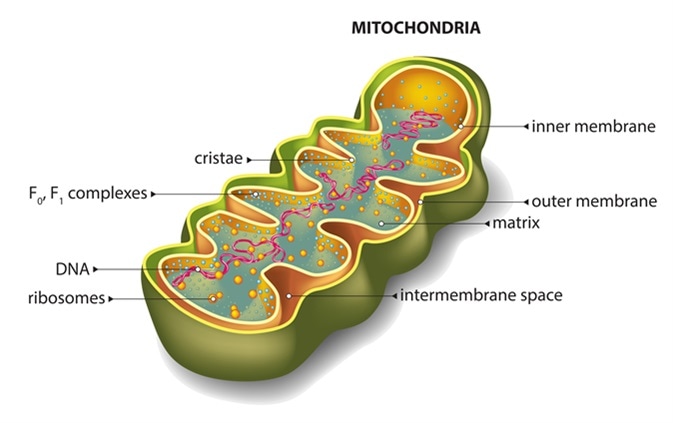When ingested by humans, micro-doses of toxins result in a positive adaptive immune response in cells and organs, whereas higher-doses have detrimental effects. This biphasic response is known as hormesis and comes from the Greek word which translates as ‘to impel’.
There are many examples of hormesis. For example, moderately low consumption of red wine has been associated with many protective health benefits. However, a higher consumption can lead to liver disease and many types of cancer. Here, a special type of hormesis, mitohormesis, and how it can be investigated will be outlined.
What is Mitohormesis?
Mitochondria are every cells’ battery. They produce energy in the form of ATP by utilising oxygen. In the process, reactive oxygen species (ROS), in the form of superoxide are formed. The accumulation of ROS over time is implicated in the ageing of cells and the pathogenesis of age-related diseases such as type-II diabetes, cardiovascular disease and dementia.

Section of mitochondria. Image Credit: NoPainNoGain / Shutterstock
In smaller quantities however, ROS play a crucial role in the health and functioning of numerous cell types. Therefore at low levels, ROS serve to be protective and critical to cell health, however in large quantities, they are detrimental to mitochondria and thus cell health. The biphasic nature of ROS formed in mitochondria is known as mitohormesis, and can have different functions depending on the availability of ROS within cells.
Low levels of mitochondrial stressors, in the form of hypoxia, calorie restriction and moderate physical activity stimulate low levels of ROS production, which in turn can signal within a cell to cause transcription of genes involved in increasing health and lifespan e.g. antioxidant enzymes.
One cell type that contains the highest number of mitochondria are muscle cells. The levels of both exogenous and endogenous ROS, in addition to antioxidants, may shape the genetic and morphological health of muscle cells, from muscle building to muscle wasting in certain neuromuscular conditions. Studying mitohormesis is critical to our understanding of this enigmatic phenomenon in the vision of treating ROS related cellular damage in the body.
Mitohormesis Analysis Methods
Bio-Imaging of Mitochondria
Applying fluorescent dyes to cell cultures and whole organisms can make a powerful and sensitive imaging tool by using conventional light/fluorescent microscopes. Since these dyes are membrane potential and redox-sensitive, they can be surrogate measures of mitochondrial health i.e. Ca2+ homeostasis or overall oxidative state in individual cells. For example, high levels of oxidative stress can cause a hyper excitability of calcium signalling within mitochondria leading to their death.
Electron Microscopy of Mitochondrial Ultrastructure
Electron microscopy allows the direct visualisation of organelle structure at very high magnification after post-fixation of tissues/cells and processing with metal compounds.
Treatment of cells with peroxide (ROS) has revealed significant changes in the structure of mitochondria, with swelling of the membrane as well as a lower density of mitochondria in cultured cells. This suggests that ROS seems to target mitochondrial health by directly interfering with their structure, and hence function.
Proteomic Mapping of Mitochondria in Muscle Cells
Proteomics refers to the analysis of protein expression including post-transcriptional modifications between different groups of cells. Isolated proteins from mitochondria are spectated using conventional electrophoresis techniques and visualised with different dyes. The spots of proteins can further be investigated for their structure by mass spectrometry.
Muscle cell growth (myogenesis) is known to be dependent on mitochondrial health. Subjecting muscle cells to toxic levels of peroxide (form of ROS) impairs muscle cell maturation by directly impeding gene transcription regulated by mitochondria.
Finally, proteomic analysis has also revealed that aerobic exercise training can cause a dynamic remodelling of mitochondria in muscle cells (by AMPK signalling), preventing age-related muscular decline as seen in people who do not regularly exercise.
However, regular intensive anaerobic exercise may actually be harmful to overall muscular health as a result of excessive ROS production and the imbalance of mitohoremeis. Furthermore, mitohormesis can also apply to a calorie restricted diet in aiding longevity through different signalling pathways e.g. IGF1 signalling.
Further Reading